#Forests species
Explore tagged Tumblr posts
Text
Grasses of Nallamala Forests in Eastern Ghats
Pennisetum pedicellatum Scaly breasted munia birds are sitting on Heteropogan contrartus grass By: Rupak
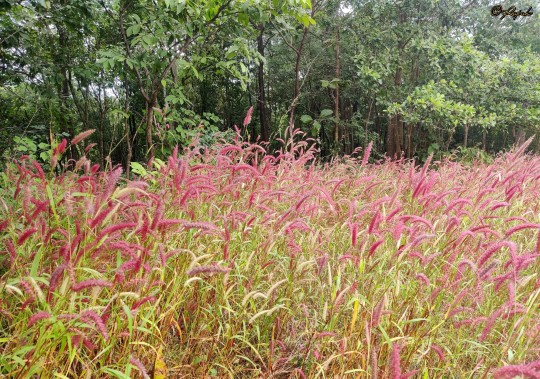
View On WordPress
#Aromatic grass#awareness#Biodiversity#Blog#Botany#Conservation#Forest Department#Forestry#forests#Forests species#GBM Sanctuary#Grass#Grass species#Grass survey#Grasses of Nallamala#Habitat#Medicinal#Medicinal grass#NALLAMALA FORESTS#Nallamala hills#native grass#Native species#Nature#Nature blog#Plant diversity#Rupak nature#Social Awareness#Wildlife
0 notes
Text
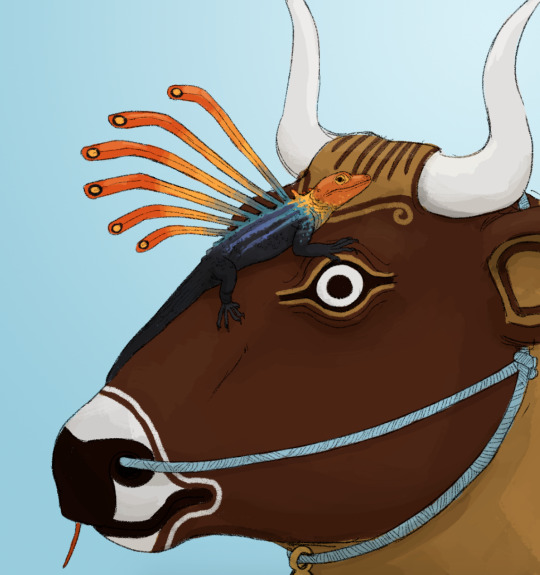
Fuck it, Longisquama analogue. Attempting to show himself off on a painted Ganmache cult statue.
#Not actually longisquama it's a squamate#I think it would be fun if Basically the same thing as one of the weirdest ancient reptiles was just out there as a completely#mundane sight. Common urban lizard#Probably part of a wider genera with most species in forest habitats and a few adapted to open grassland/scrub#creatures
409 notes
·
View notes
Text
"Nouabalé-Ndoki National Park in Brazzaville, Republic of Congo has a lot to celebrate.
The park, which celebrated its 30th anniversary on December 31 of 2023, also shared an exciting conservation milestone: 2023 was the first year without any elephant poaching detected.
“We didn’t detect any elephants killed in the Park this year, a first for the Park since [we] began collecting data. This success comes after nearly a decade of concerted efforts to protect forest elephants from armed poaching in the Park,” Ben Evans, the Park’s management unit director, said in a press release.
Nouabalé-Ndoki National Park was developed by the government of Congo in 1993 to maintain biodiversity conservation in the region, and since 2014, has been cared for through a public-private partnership between Congo’s Ministry of Forest Economy and the Wildlife Conservation Society.
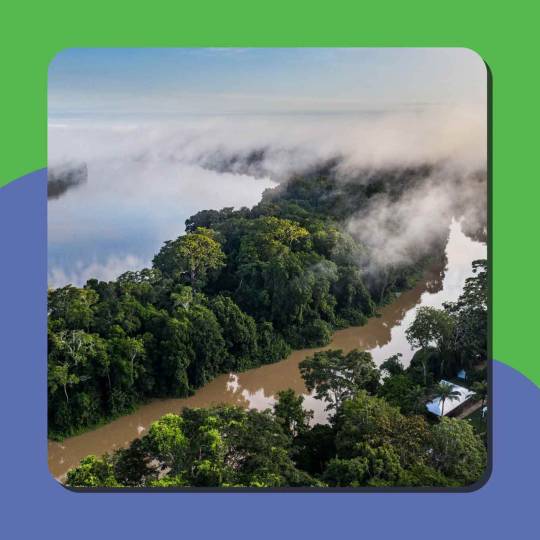
Pictured: Nouabalé-Ndoki National Park. Photo courtesy of Scott Ramsay/Wildlife Conservation Society
Evans credits the ongoing collaboration with this milestone, as the MEF and WCS have helped address escalating threats to wildlife in the region.
This specifically includes investments in the ranger force, which has increased training and self-defense capabilities, making the force more effective in upholding the law — and the rights of humans and animals.
“Thanks to the strengthening of our anti-poaching teams and new communication technologies, we have been able to reduce poaching considerably,” Max Mviri, a park warden for the Congolese government, said in a video for the Park’s anniversary.
“Today, we have more than 90 eco-guards, all of whom have received extensive training and undergo refresher courses,” Mviri continued. “What makes a difference is that 90% of our eco-guards come from villages close to the Park. This gives them extra motivation, as they are protecting their forest.”
As other threats such as logging and road infrastructure development impact the area’s wildlife, the Park’s partnerships with local communities and Indigenous populations in the neighboring villages of Bomassa and Makao are increasingly vital.
“We’ve seen great changes, great progress. We’ve seen the abundance of elephants, large mammals in the village,” Gabriel Mobolambi, chief of Bomassa village, said in the same video. “And also on our side, we benefit from conservation.”
Coinciding with the Park’s anniversary is the roll-out of a tourism-focused website, aiming to generate 15% of its revenue from visitors, which contributes significantly to the local economy...
Nouabalé-Ndoki also recently became the world’s first certified Gorilla Friendly National Park, ensuring best practices are in place for all gorilla-related operations, from tourism to research.
But gorillas and elephants — of which there are over 2,000 and 3,000, respectively — aren’t the only species visitors can admire in the 4,334-square-kilometer protected area.
The Park is also home to large populations of mammals such as chimpanzees and bongos, as well as a diverse range of reptiles, birds, and insects. For the flora fans, Nouabalé-Ndoki also boasts a century-old mahogany tree, and a massive forest of large-diameter trees.
Beyond the beauty of the Park, these tourism opportunities pave the way for major developments for local communities.
“The Park has created long-term jobs, which are rare in the region, and has brought substantial benefits to neighboring communities. Tourism is also emerging as a promising avenue for economic growth,” Mobolambi, the chief of Bomassa village, said in a press release.
The Park and its partners also work to provide education, health centers, agricultural opportunities, and access to clean water, as well, helping to create a safe environment for the people who share the land with these protected animals.
In fact, the Makao and Bomassa health centers receive up to 250 patients a month, and Nouabalé-Ndoki provides continuous access to primary education for nearly 300 students in neighboring villages.
It is this intersectional approach that maintains a mutual respect between humans and wildlife and encourages the investment in conservation programs, which lead to successes like 2023’s poaching-free milestone...
Evans, of the Park’s management, added in the anniversary video: “Thanks to the trust that has been built up between all those involved in conservation, we know that Nouabalé-Ndoki will remain a crucial refuge for wildlife for the generations to come.”"
-via Good Good Good, February 15, 2024
#conservation#congo#republic of congo#elephant#gorilla#endangered species#biodiversity#conservation news#conservation efforts#indigenous communities#national park#protected areas#poaching#elephant poaching#ecology#biology#environment#environmental news#forests
1K notes
·
View notes
Text

creature...

oh no I’ve domesticated them :O
#illustration#character design#monster art#creature#digital art#legally this could go on onelilguy but they're not very little#he slowly carves huge paths in the forest looking for bugs#slow enough that they grow moss and this bird species builds nests on them#then they eat any pests on him as he sleeps#the domesticated ones are smaller to be a bit faster (not by much)#and so people can more easily dress them for travel#their sturdy gait and endurance makes them ideal for travelling long distances with a lot of stuff
580 notes
·
View notes
Text


#HEHEHE THEY'RE SO CUTE I LOVE THEMMM#such a shame these scenes are so brief 😭#avatar#avatar 2#the way of water#sully family#jake sully#neytiri#neteyam#kiri#lo'ak#jeytiri#lì'fya leNa'vi#gif#i'm actually not sure whether Jake is meant to be saying “sloa tsyal” (wide wing) or “slotsyal” (stormglider) here#but i thiiiiiink i hear the -a sound in there#i mean i suppose it doesn't REALLY matter; either one would make sense in this context#and the species name “slotsyal” derives from “sloa tsyal” anyways (as I'm sure you could've guessed hrh)#(btw “syu” is not a real word; just the closest I could come to the “whoosh” sound effect he's making with Forest dialect phonetics hrh)#it sounds like he also says something else before Neytiri says “hufwe” but I can't make out what it's supposed to be#cuz the voiceover narration is talking over it -_-;#in the next shot when Neytiri is running around she also says something#sounds like it might be “tysal latsu” meaning roughly “must be a wing”#or perhaps “tsyal atun” meaning “red/orange wing” which would make sense with Kiri's little Toruk toy#but I think there's an S sound in there so idk#again it's hard to tell because the narration is playing over it#SHUT UP NARRATION JAKE I'M TRYING TO HEAR WHAT'S HAPPENING IN THE SCENE 😭#oh well
316 notes
·
View notes
Text
From the article:
Today marks an unprecedented victory for conservation and commerce,” said Scott Phillips, South Carolina Forestry Commission’s State Forester. “Coined the nation’s ‘wood basket’, this region’s timberlands are one of the state’s most important assets. Not only do forested landscapes provide clean water, scenic beauty, wildlife habitat, and outdoor recreation, they also represent a renewable resource with a major economic impact. The funding announced for this initiative is a win on every level—for our state’s economy, for our workforce, for residents, and for wildlife.
#conservation#forest conservation#local conservation#hope#good news#biodiversity#animal conservation#habitat conservation#hopepunk#environment#ecoanxiety#funding conservation#endangered species#ecological grief#ecology
239 notes
·
View notes
Text
Good News - July 8-14
Like these weekly compilations? Tip me at $Kaybarr1735! And if you tip me and give me a way to contact you, at the end of the month I'll send you a link to all of the articles I found but didn't use each week!
1. Zoo welcomes birth of four endangered horse foals
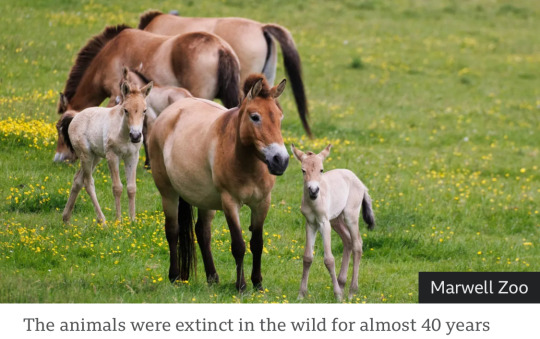
“[The Marwell Zoo in GB] said it was "delighted" to welcome the arrivals to the endangered Przewalski’s horse herd. All four are female and said to be "doing well" after two were born in May and two in June. […] “These horses, that were previously listed extinct in the wild, are an example of how zoo breeding programmes can help restore threatened species around the world.” […] All the Przewalski’s horses alive today are descended from just 12 individuals. Current estimates suggest there are 178 mature individuals living in the wild.”
2. Restoring woodlands and planting trees for sustainability success

“In 2023, [the Marwell Zoo] planted 9,000 new trees […] both within the zoo and on our surrounding land. […] Marwell tries to encourage natural feeding behaviour and nutrition by including leafy material [in animals’ feed] as much as possible. […] Planting more trees and enhancing management of our existing woodlands, prepares the way to further self-sufficiency in browse production in the future. Plus, it creates new habitats for wildlife in our woodland areas.”
3. Inclusive Playgrounds Allow Children Of All Abilities To Play

“With ramps allowing children in wheelchairs to ascend the central play structure, as well as numerous other swings and apparatus usable for children of all abilities, the 16,000-square-foot P.K.’s Place is St. Paul’s first fully inclusive playground. […] To be universally accessible, a play area must have at least 70% of its play features fully accessible, far more than required by the Americans with Disabilities Act (ADA). […] Play areas should allow parents and grandparents with disabilities to participate as well.”
4. Combination treatment can increase human insulin-producing cells in vivo
“[Diabetes-model mice] were treated with the combination therapy [of a plant product called harmine and “a widely used class of type 2 diabetes therapy”] and their diabetes was rapidly reversed. Strikingly, human beta cell numbers increased by 700 percent over three months with this drug combination. "This is the first time scientists have developed a drug treatment that is proven to increase adult human beta cell numbers in vivo. This research brings hope for the use of future regenerative therapies to potentially treat the hundreds of millions of people with diabetes," said Dr. Garcia-Ocaña, the paper's corresponding author.”
5. Decades of Dedication: Australia’s Largest Ongoing Urban Restoration Project
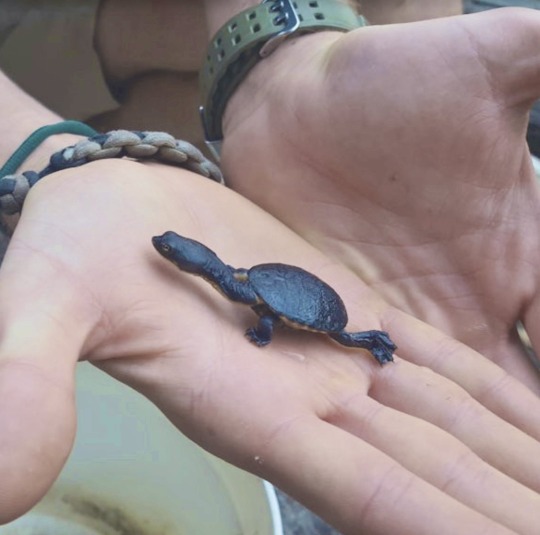
“[Friends of Lake Claremont] has transformed the area into a thriving ecosystem, re-establishing native habitats and fostering biodiversity. This year, 800 native seedlings (100 trees, 350 shrubs and 350 ground covers) have been planted on the northwestern buffer of Lake Claremont. Volunteers replaced a large Port Jackson fig (Ficus rubiginosa) affected by [beetle] infestation with native plants to enhance the local wildlife habitat, thereby benefiting insects, frogs, birds and brown bandicoots. […] Overall, the project contributes to the area’s function as a regional ecological corridor, linking inland bushlands, the Swan River and the Indian Ocean.”
6. Important habitat for fish in Heart of the Fraser now conserved

“British Columbia’s iconic salmon now have more protected spawning habitat in the lower Fraser River, thanks to the Nature Conservancy of Canada’s (NCC’s) conservation acquisition of Carey Island. […] Carey Island and its gravel channels offer calm and crucial spawning and rearing habitat for the river’s fish and aquatic species. […] The Pelólxw Tribe […is also] actively working to restore the resilience of aquatic habitat within this stretch of the Lower Fraser. NCC is exploring opportunities to collaborate with the Pelólxw Tribe in support of their vision for stewardship of the area, which prioritizes both ecological and cultural values.”
7. Prime editing efficiently corrects cystic fibrosis mutation in human lung cells
“[R]esearchers have developed a gene-editing approach that efficiently corrects the most common mutation that causes cystic fibrosis, found in 85 percent of patients. With further development, it could pave the way for treatments that are administered only once and have fewer side effects. The new method precisely and durably corrects the mutation in human lung cells, restoring cell function to levels similar to that of Trikafta [the standard treatment since 2019].”
8. Montana’s High Court Considers a Constitutional Right to a Stable Climate
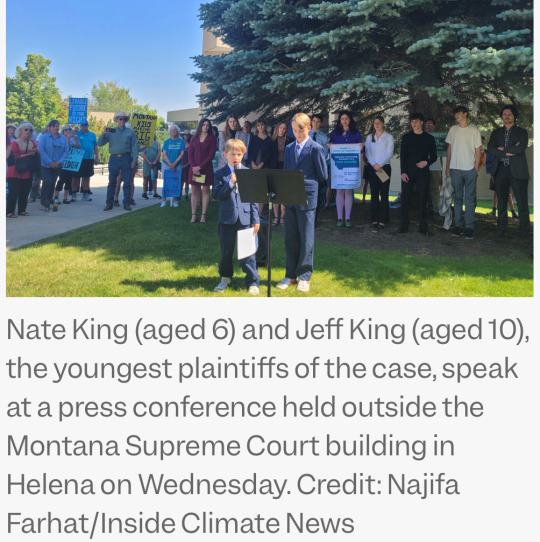
“At issue was the appeal of a decision last year, when a Montana judge blocked a state law that prohibited agencies from considering climate impacts when deciding whether to approve fossil fuel projects such as new power plants, pipelines or mining. The ruling, by District Judge Kathy Seeley, was prompted by a lawsuit filed by 16 youths who argued that the law violated Montana’s constitutional right to a “clean and healthful environment.” It was the first ruling in the United States to effectively establish constitutional rights to a stable climate[….]”
9. The US is about to get its first solar-covered canal

“The first canal-based solar project in the U.S. is nearing completion on tribal lands south of Phoenix, Arizona. […] The long, narrow solar array design would snake along the line of the canal and tap into the local electrical distribution grid every 1,000 feet, or every one megawatt. […] “Canal solar allows for greater power production per land size, cleaner water, less power transmission losses, and significant reduction in evaporation[….]” Covering the entire 8,000 miles of canals and waterways managed by the Bureau of Reclamation with solar panels could generate over 25 gigawatts of renewable energy and reduce water evaporation by tens of billions of gallons[….]”
10. Camera traps offer glimpse of first beaver born in Northumberland for 400 years
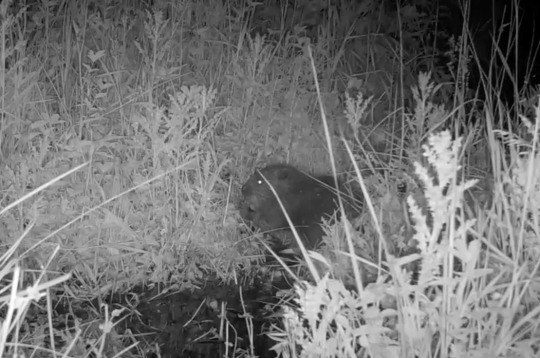
“"It’s such a relief that they have bred successfully and to see a new fluffy kit swimming with the family[….]” In just one year [since releasing the beavers], there has been a noticeable increase in resident trout, says the National Trust, along with more regular visits from kingfishers and grey herons. There are more insects at the site, too, thanks to the organic matter that builds up behind the dams, which in turn provides food for Daubenton’s bats. […] Beavers also play an important role in creating habitats that are more resilient to the effects of climate change[….]”
July 1-7 news here | (all credit for images and written material can be found at the source linked; I don’t claim credit for anything but curating.)
#hopepunk#good news#horse#zoo#nature#extinct species#sustainability#forest#children#disability#playground#disabled#wheelchair#diabetes#medicine#science#urban#biodiversity#ecosystem#fish#first nations#cystic fibrosis#gene editing#climate change#climate#youth#human rights#solar panels#solar energy#beaver
330 notes
·
View notes
Text
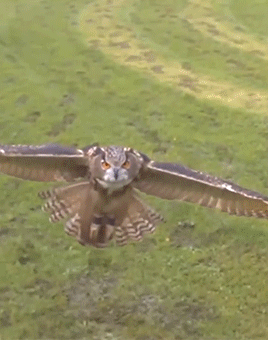
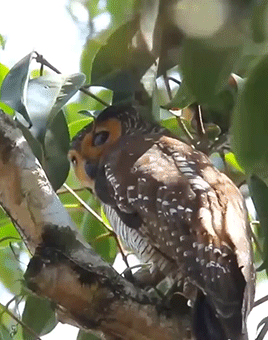
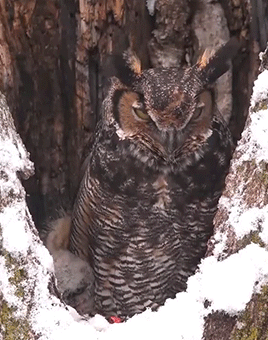

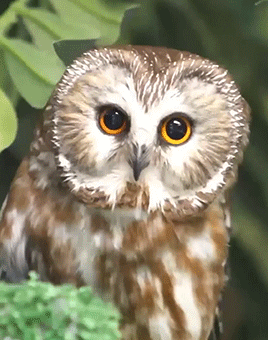
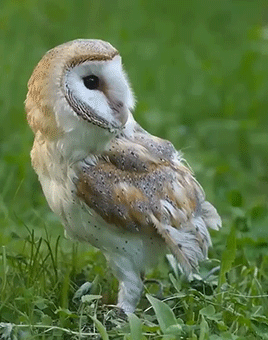


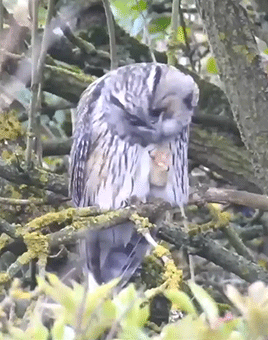
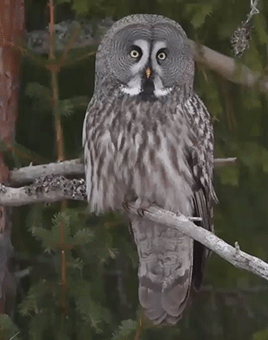
🦉 owls 🦉
750 notes
·
View notes
Text
This is a really cool study! In short, researchers have been exploring the biodiversity in Ecuadorian rain forests at different stages of succession, from second-growth forests recovering from cattle ranching or intensive cacao farming, to old growth forests. Moreover, they're studying over ten thousand taxa of animals, plants, and other living beings--an unprecedented number.
All of this is helping scientists get a better idea of how tropical rain forests may recover from the immense, repeated human disturbances they've been subjected to in recent centuries. The great news is that a clearcut forest regains almost 80% of its old growth biodiversity and other characteristics in just two decades. The warm, wet climate helps to speed the recovery of an ecosystem, from buildup of the soil to return of biomass.
This shouldn't, of course, be seen as an excuse to continue destroying rain forests. True old growth is still needed, and a species can become more imperiled and even extinct in the twenty years it takes a clearcut to recover--look at the golden toad (Incilius periglenes), which disappeared a scant 25 years after western science first discovered it. However, the findings of the study offer hope for those supporting the restoration of tropical rain forest habitat, and right now we can use all the hope we can get.
#rain forest#forest#ecology#restoration ecology#habitat restoration#tropical rain forest#rainforest#nature#wildlife#conservation#environmentalism#biodiversity#endangered species#extinction#science#scicomm#Ecuador#good news#positive
82 notes
·
View notes
Text

springtail resting in the shadow of an immature slime mold fruit body
by Petter Lilleengen, Norway.
#i always find our native giant springtails feasting on slime mold but my phone camera is no good for it#the ones i find i are big girls with pretty yellow and orange spike !! Holacanthella spp.#but i can’t find any good pics of the same scenario atm so this will have to do for now#insects#springtails#unidentified species#myxomycota#slime mold#slime mould#forest floor#ecology#forestcore#myxomycology#myxomycetes#collembola
1K notes
·
View notes
Text

autumn heralds


I really love the duality of predators in art, their nobility and the awe of their presence, contrasted with the dread and terror of the hunt. It's something I'm fascinated by, in an artistic as well as a biological sense. It's easy, as humans whose brains are sometimes ruled by stereotype, to swing towards either romanticizing or vilifying the predator. I crave the nuance found somewhere in the middle. Where the creature can be appreciated for what it is, rather than what it means.
#just a pack of huroden running through the autumn forest#I wanted to paint something SATURATED with fall vibes#and the huroden showed up to breath some life into the scene#anyway happy fall ya'll#original species#artists on tumblr#autumn vibes#rodi#hurodi#grace makes art
83 notes
·
View notes
Text

Oregon Forestsnail
#artists on tumblr#original photographers#original photography#hiking#pacific northwest#nature#washington#pnw#orofeaiel#nikon#forest finds#oregon forestsnail#snail#cottagecore#mollusk#endangered species#vulnerable species
185 notes
·
View notes
Text
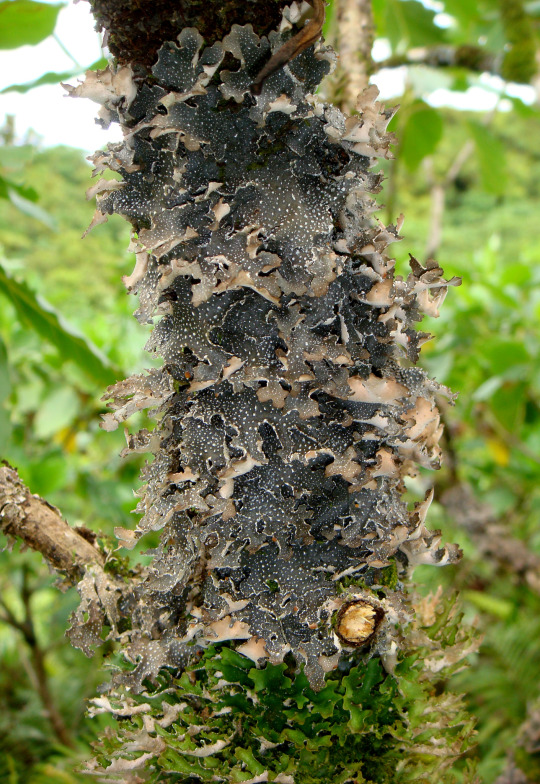
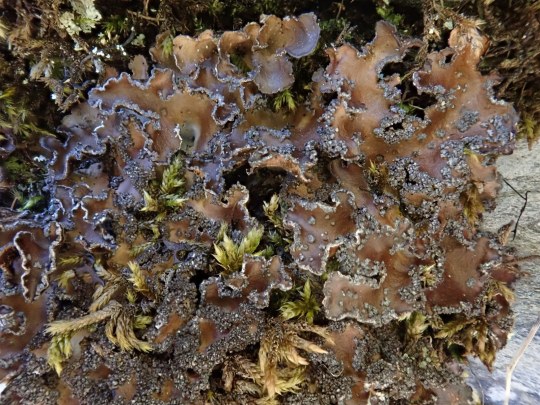
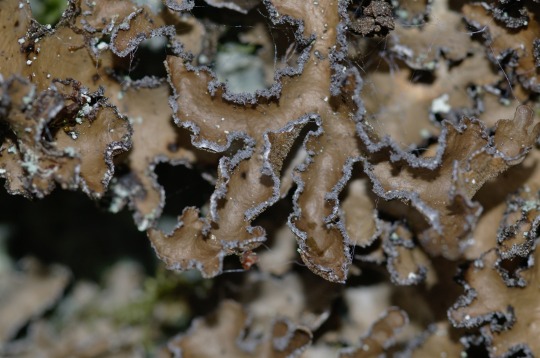
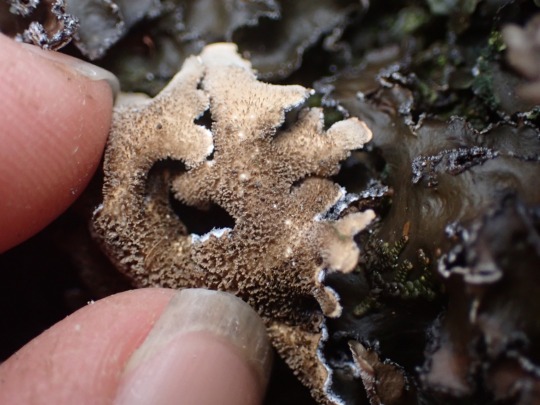
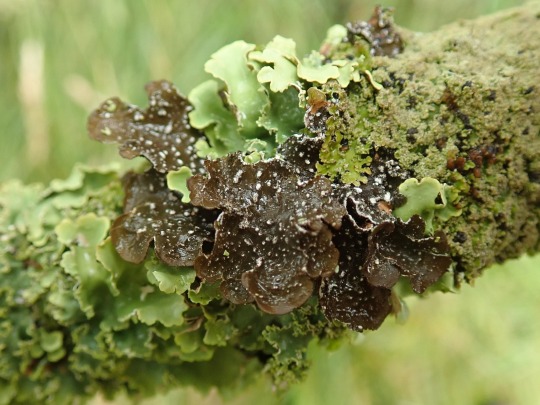
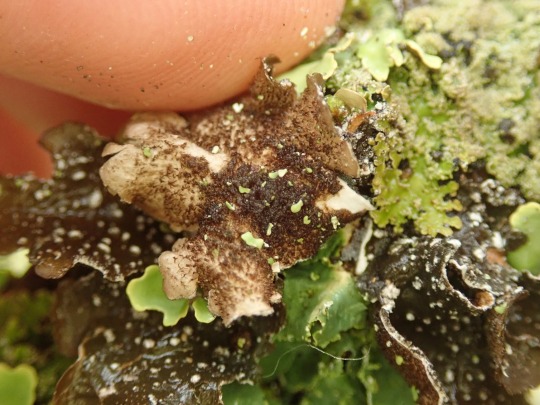
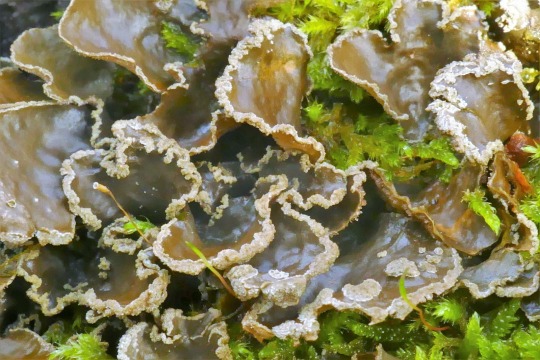
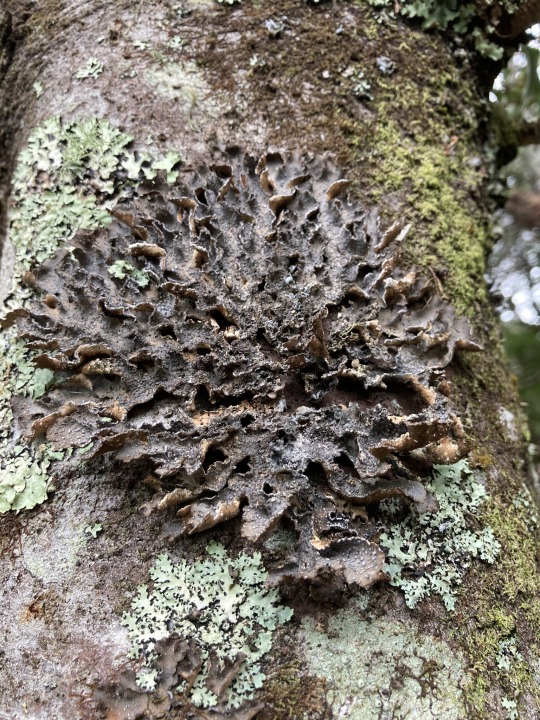

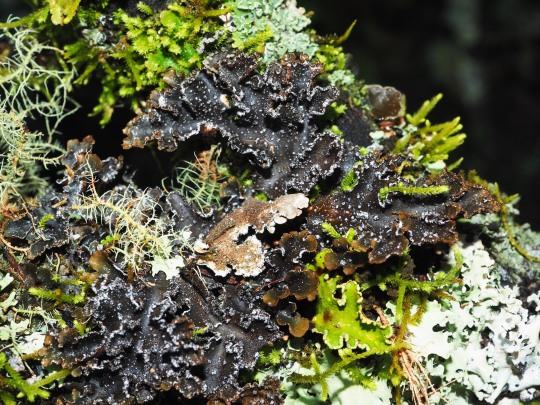
Pseudocyphellaria intricata
The rare or endangered species that get the most attention are often the most adorable or charismatic, and humans tend to like things that we can recognize some bit of ourself in. So in that sense, I get why lichens don't get all that much attention. But my goodness, when I look at P. intricata, it looks like a starry night sky or the billowing, cosmic clouds of a nebula or some inexplicably vast yet minute and mysterious galaxy, and I am gazing at in wonder and feeling my own insignificance, and damn if that doesn't make me want to protect it, too. This large, foliose cyanolichen has loosely attached lobes which grow in rosettes or extensive patches up to 20 cm in diameter. The lobes have incised margins covered in a layer of blue-gray soredia, which often spread across the thallus is scattered dots or squiggly lines. The upper surface is gray-brown when moist, red-brown when dry, and the lower surface is beige and tomentose, with scattered pseudocyphella (tiny sunken bald patches). Like many old-growth forest species, populations of P. intricata are on the decline as the humid, costal woodlands it resides in are becoming a thing of the past due to logging, pollution, and climate change. And that makes me sad for a lot of reasons I can't articulate, but so much of it has to do with the destruction of the majestic and wonderful and diverse things of the world in favor of the ordinary and the temporary and the mundane. I don't really know what to do about it, but I think if more of us cared about the tiny infinities growing in the forests, that would be a start, you know?
images: source
info: source | source | source
#lichen#lichens#lichenology#lichenologist#mycology#ecology#conservation biology#biology#endangered species#symbiosis#symbiotic organisms#cyanobacteria#fungus#fungi#Pseudocyphellaria intricata#Pseudocyphellaria#trypo#trypophobia#life science#environmental science#natural science#nature#forest#see the forest for the lichens#I'm lichen it#lichen a day#daily lichen post#lichen subscribe#beautiful nature#weird nature
157 notes
·
View notes
Text
#wildlife#cambodia#good news#environmentalism#science#environment#nature#animals#conservation#wildlife species#discoveries#mangroves#mangrove forests
161 notes
·
View notes
Photo
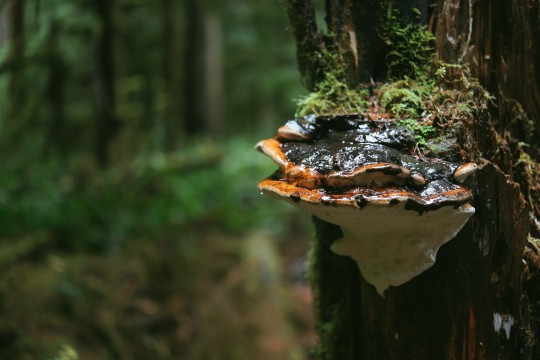
Red belted conk
#fungus#mushroom#fungi#artists on tumblr#mycology#nature#lensblr#original photographers#photography#macro#photographers on tumblr#Washington#vsco#pacific northwest#p#I think - only bc they recently got divided into two species#mushrooms#original photography#forest#cottagecore
192 notes
·
View notes
Text
Three hours every single day is an insane amount of time to step on the same three creatures. It would take like less than a minute for them to get through one of each (including the groups of three). That's so many things to kill every single day. the butt crushers are an invasive species and in this essay I will-
#i actually think speedy reproduction is a part of being an invasive species but#seriously that's like an insane amount how have they not killed all the rats in the forest#dimension 20#d20#dimension 20 fantasy high#fantasy high#fhjy#fhjy spoilers#d20 fhjy#rat grinders#the rat grinders
318 notes
·
View notes